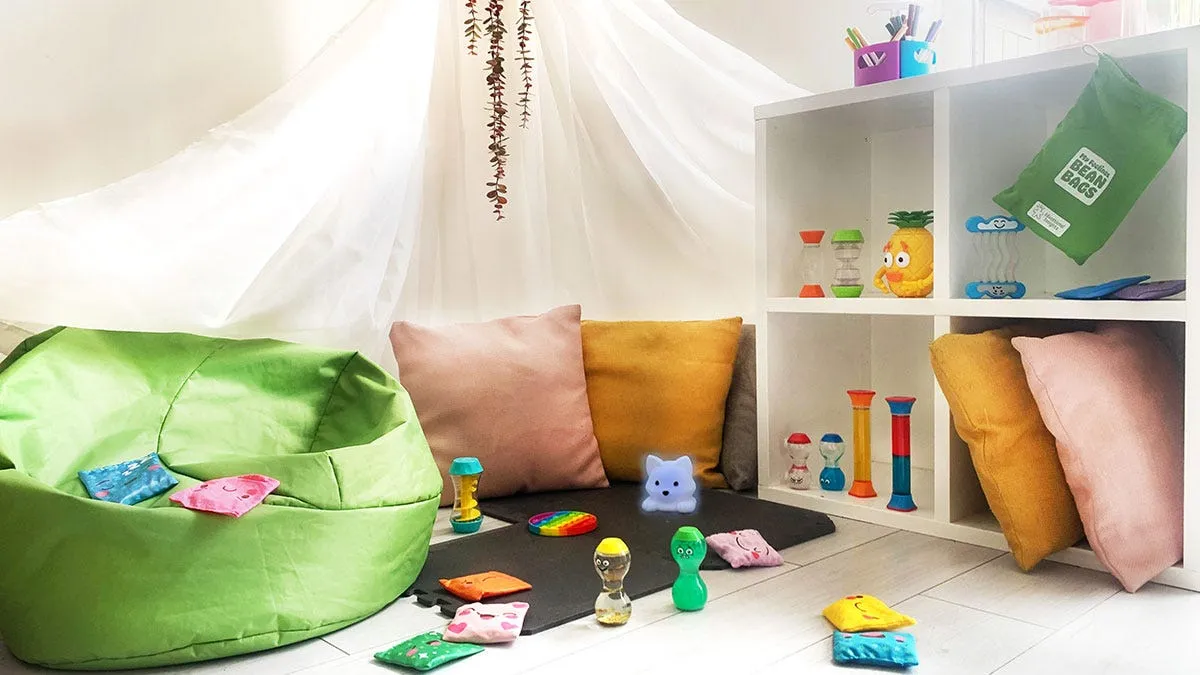
Creating a sensory corner at home can give your child a safe, calming space to regulate their emotions, reduce stress, and feel secure. It doesn’t need to take up a whole room — even a small nook can become a powerful retreat when designed with care.
Here’s a step‑by‑step guide to building your own sensory corner:
Pick a quiet spot away from high‑traffic areas. This could be:
A corner of your child’s bedroom or playroom
A pop‑up tent or small canopy for an enclosed feel
Even a cozy nook created with a sheet draped over furniture
The goal is to create a semi‑private, low‑stimulus area where your child feels safe.
Comfort is key to relaxation. You can add:
These items make the space feel warm, welcoming, and soothing.
Lighting and colours set the tone of the space:
Use soft, muted colours like blues, greens, or purples
Avoid harsh fluorescent lights — instead use adjustable lamps, string lights, or dimmable bulbs
Try a lava lamp, bubble tube, or soft glow projector for gentle visual stimulation
Sensory elements help with focus and regulation:
Soft plush toys, textured balls, or tactile boards
Fidget toys or stress balls
Calming sounds like white noise, nature sounds, or gentle music
Aromatherapy diffusers with essential oils like lavender
A cuddly Kubooh Plushie (Kubooh the Cat or soft Coco the Rabbit) with soothing glow, sounds, and gentle breathing motion
These tools provide both comfort and healthy sensory input.
Every child is different, so make it theirs:
Let your child choose colours, textures, or favourite items
Rotate toys and tools to keep it engaging and prevent boredom
Make sure the space always feels safe, inviting, and consistent
✨ Final Tip: Keep it simple at first — a tent, a plushie, and a soft light might be all your child needs. Over time, you can add more elements as you learn what helps them feel most secure.
With the right setup, your sensory corner becomes more than just a cozy spot — it’s a space where your child can self‑soothe, reset, and feel truly at peace.